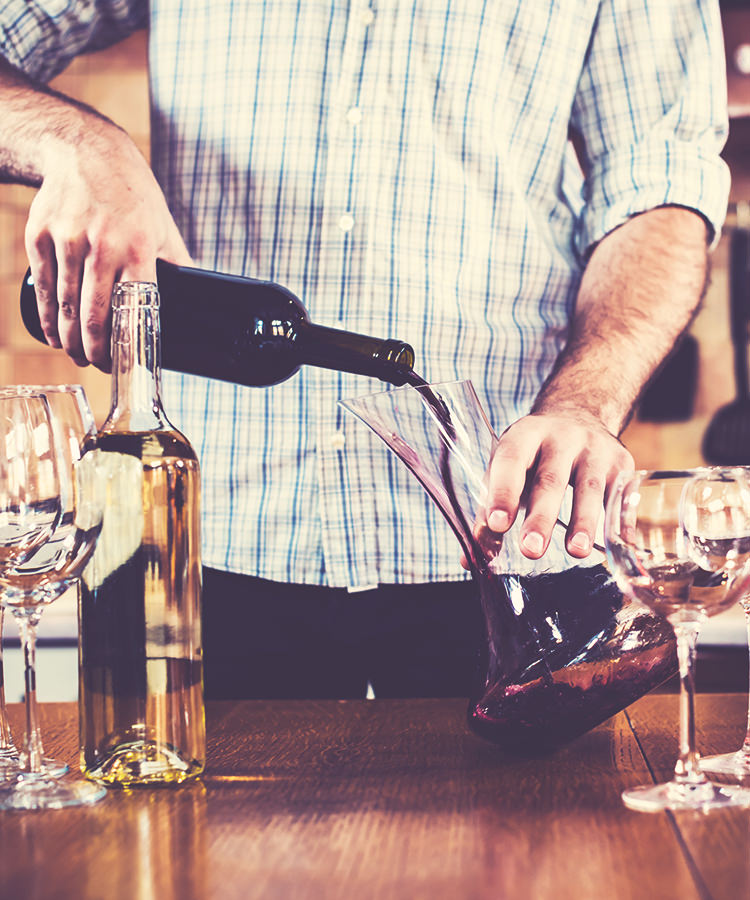Decanting isn’t just for the nobles on “Downton Abbey” or pricey bottles in fancy restaurants. Like many seemingly precious wine practices (aggressive swirling, audible sniffing), decanting has a practical explanation.
The primary reason to decant any wine is aeration. By pouring wine into another vessel, the juice gets exposed to oxygen rapidly. This “wakes up” flavors and aromas that have been locked in the bottle for years or even decades, making the wine in question livelier and more interesting to drink. In this manner, decanting is simply a more intense version of swirling your glass.
Generally, this is useful for young wines. Bold reds like Malbec or Shiraz become much more expressive with a touch of oxygen. Most experts advocate for a vigorous decanting — air is your friend here — so splash the bottle into the decanter and really shake things around.
With young wines, it’s O.K. to serve them immediately after decanting or allow the wine to breathe for a few hours. Because young wines have bold flavors, extended time in a decanter (up to four hours but not overnight) won’t damage the aromas or flavors of the wine.
No decanter on hand? No problem. Since decanting is mostly about exposing wine to air, it really doesn’t matter where you put it afterward. Dump the wine into a pretty vase (wash it first!), or goldfish bowl or blender pitcher. Quite honestly, red Solo cups make halfway decent decanters. If you’re hosting a dinner party and presentation is important, try this trick: Pour the wine into any other vessel and then use a funnel to return the wine to the bottle. Voilà! Wine is aerated and ready to enjoy.
The second purpose of decanting is to separate wine from sediment in old bottles. When wine ages in its bottle, oxygen slowly interacts with the juice through the cork, causing it to develop new flavors and aromas. Throughout the process, bits of sediment form and fall to the bottom. There’s nothing poisonous about this sediment, but it tastes extremely bitter.
If you’re opening a 10-plus-year-old bottle, decanting is key. The technique for removing sediment is the opposite of the vigorous decant. Gently pour the wine into the decanter (or vase, blender, fishbowl, pint glass) while watching the neck of the bottle. As soon as you can see sand-like sediment in the neck, stop pouring. There may be a few ounces of wine left in the bottle, but it’s better left there. On the other hand, if you want to save every drop, place a fine-mesh strainer over the top of the decanter (or your glass) and pour to the last drop.
With old wines, it’s best to decant immediately before serving. Refrain from any vigorous swirling, which could make delicate aromas fade away.
Although many people associate decanting with red wine, the practice isn’t limited by color. White and even rosé wines can benefit equally from decanting. The same rules apply: Vigorously decant decadent and flavorful white or rosé wines, and gently decant very old bottles. The only wines that shouldn’t be decanted are sparkling wines, since decanting will remove the effervescence that makes these bottles so delicious and chuggable.
Debating when to decant? Remember the golden rule: Drink wine how you like it. There’s really no wrong answer in the end, so use these tips as guidelines and experiment at will. The next time you find a dusty old bottle or a hearty Shiraz, give it a try and drink happy.
